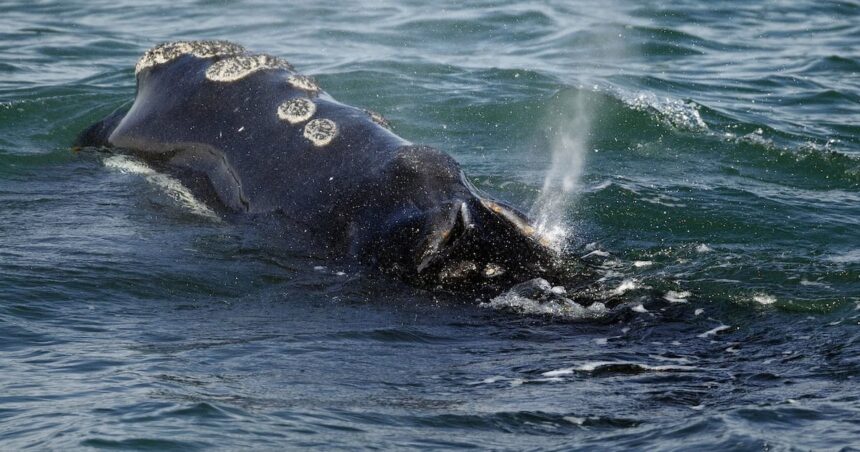In what conservationists are calling a “devastating setback,” North Atlantic right whales have produced only a single documented calf during the latest breeding season, intensifying fears that one of the world’s most endangered large mammals may be spiraling toward extinction. With fewer than 360 individuals remaining worldwide, the critically endangered species faces mounting threats that appear to be overwhelming its reproductive capacity.
The solitary calf, spotted off Georgia’s coast in January, represents the lowest birth rate recorded since scientists began comprehensive monitoring in the 1980s. This reproductive failure follows several promising years when researchers had observed modest increases in calving numbers, briefly kindling hope for the species’ recovery.
“What we’re witnessing is deeply alarming,” said Dr. Emma Hamilton, marine mammal specialist at the Atlantic Conservation Institute. “Right whales typically produce calves every three to five years, but climate change, fishing gear entanglements, and vessel strikes are disrupting this cycle. Many females are now going seven to ten years between successful pregnancies—if they reproduce at all.”
Recent data from the North Atlantic Right Whale Consortium reveals the population has declined by approximately 30 percent over the past decade. The consortium’s tracking shows that human-caused mortality—primarily from fishing gear entanglements and vessel collisions—continues to outpace births, creating an unsustainable population trajectory.
The consequences of this reproductive collapse extend beyond the whales themselves. As baleen filter feeders, right whales play a crucial role in marine ecosystems, cycling nutrients and helping maintain the health of ocean food webs. Their decline represents not just the potential loss of a species but a disruption to entire marine environments.
Canadian officials have implemented seasonal speed restrictions in the Gulf of St. Lawrence and adjusted fishing seasons to reduce interactions with the mammals, which migrate annually between calving grounds off Florida and Georgia to feeding areas off Canada’s Atlantic coast. However, conservation experts argue these measures, while important, remain insufficient.
“The protection measures aren’t keeping pace with changing whale behavior,” explained Michael Rosenberg, director of marine policy at Ocean Future Alliance. “As warming waters shift their prey distribution, right whales are appearing in unexpected areas at unexpected times, often outside protected zones.”
The single calf born this season faces daunting survival odds. Historical data suggests only about 60 percent of calves survive their first year, with females requiring years to reach sexual maturity. This demographic reality means that even if protection measures were immediately strengthened, population recovery would likely take decades.
The U.S. National Oceanic and Atmospheric Administration recently proposed expanding vessel speed restrictions along the eastern seaboard to better protect the whales, a move that has faced resistance from shipping and fishing industries concerned about economic impacts.
“We’re approaching a critical inflection point,” warned Dr. Patricia Simmons, who has studied right whale populations for over two decades. “The math is brutally simple—when deaths consistently outnumber births, extinction becomes inevitable unless dramatic intervention occurs.”
As international conservation bodies convene to address the crisis, the fundamental question remains: can human societies modify their marine activities enough to give these ancient creatures a fighting chance at survival, or are we witnessing the quiet disappearance of a species that once defined our coastal waters?










